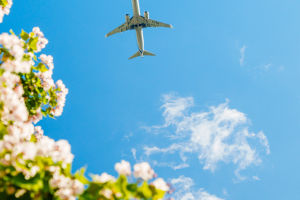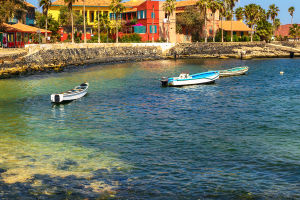Preparing for a two-week trip across Europe can feel both thrilling and overwhelming. What should you bring to cover multiple countries, changing climates, and diverse city styles—all while staying under luggage limits?
If you're wondering how to pack smart without overstuffing your suitcase, this practical guide will walk you through everything you need to feel confident before departure.
1. Choose the Right Luggage
Start with choosing the ideal bag. For most travelers, a 65–75L soft-shell suitcase or a 40–50L travel backpack works best for a two-week trip.
• Suitcase users should look for spinner wheels and expandable compartments.
• Backpackers should choose one with padded straps and good back support.
• Carry-on only? You can do it, but you'll need to wash clothes halfway and pack smart.
Tip: Some budget airlines in Europe (like Ryanair or Wizz Air) have strict cabin baggage rules. Be sure your luggage fits their carry-on size: 40 x 25 x 20 cm is common.
2. Clothing: Layering Is Key
Europe's weather can vary greatly by region and season. You might encounter sunshine in Rome, wind in Amsterdam, and rain in Edinburgh—all in one trip. Instead of packing heavy, pack light and layer up.
Recommended packing list:
1. 4–5 breathable t-shirts (blend of cotton and synthetic)
2. 1–2 long-sleeve shirts or blouses
3. 1 light fleece or hoodie
4. 1 packable down jacket or windbreaker (especially for northern Europe)
5. 2 pairs of trousers (1 jeans, 1 quick-dry)
6. 1 pair of comfortable walking shoes
7. 1 pair of sandals or flats
8. 1–2 dresses or skirts (optional)
9. 7–8 sets of underwear and socks
10. 1 compact umbrella and a foldable rain jacket
Bonus tip: A scarf or shawl is useful in worship, chilly nights, or flights.
3. Essential Gear You Shouldn't Forget
Some small travel items make a big difference:
Must-pack essentials:
1. Universal travel adapter (Europe uses Type C/E/F plugs and 220V)
2. Power bank (minimum 10,000 mAh)
3. Reusable water bottle (many European cities have free clean fountains)
4. Small laundry detergent & sink stopper (for washing socks and underwear)
5. Compression packing cubes (to save space)
6. Eye mask and earplugs (for trains and hostels)
7. Flip flops for showers or hotel floors
8. A compact daypack or sling bag
9. Digital copy of passport and travel insurance
4. Toiletries: Pack Light and Compliant
All carry-on liquids must be under 100 ml and fit in a 1-liter clear ziplock bag. Consider buying full-sized items after arriving, especially if you'll be in one place for a few days.
Recommended travel-size items:
• Toothbrush + small toothpaste
• Solid shampoo bar (eco-friendly and TSA-friendly)
• Face wipes or micellar water
• Sunscreen (SPF 30+), lip balm
• Travel-size deodorant
• Personal medication (in original packaging)
Note: Pharmacies (called "Apotheke" in Germany or "Pharmacie" in France) are easy to find and often sell international brands.
5. Travel Documents and Finances
Before you go, prepare a simple pouch or wallet for:
• Passport (valid at least 6 months)
• EU visa or Schengen visa if needed
• Train passes (like Eurail or Interrail)
• Credit/debit card (ideally with no foreign transaction fees)
• A small amount of local cash (€100–150)
• Travel insurance documents
Pro tip: Use Revolut or Wise cards for easy currency exchange and online payments across borders.
6. Rain and Cold? No Problem
If your trip includes northern Europe (e.g., Netherlands, Denmark, Scotland) or mountains (e.g., Switzerland, Austria), weather can shift fast. Be ready with:
Weather-proof essentials:
1. Lightweight rain jacket with hood
2. Waterproof shoe spray (treat your sneakers before leaving)
3. Warm hat and gloves if visiting in spring/fall
4. Foldable poncho (great for festivals or sudden storms)
5. Fast-drying socks
Check weather apps like AccuWeather or Windy for the most accurate short-term forecasts across Europe.
7. Digital Tools for a Smoother Trip
Technology makes travel lighter and easier. Download these apps:
1. Maps (with offline maps saved)
2. Trainline for train schedules and booking
3. Rome2Rio for transport comparisons
4. Duolingo or Translate
5. XE Currency for exchange rates
6. Booking.com or Hostelworld for hotels
8. Safety Tips for Packing
Pickpocketing is a known issue in some touristy areas (like Barcelona, Paris metro, or Rome). Here's how to stay prepared:
Pack smart for safety:
• Use anti-theft bags or crossbody slings
• Don't carry all your money in one place
• Avoid flashy luggage or brand-new gear that draws attention
• Keep your phone zipped and never in your back pocket
• Use a TSA-approved lock on your main bag
9. Optional but Handy Items
Depending on your travel style, these could be useful:
• Small foldable shopping bag (for groceries or souvenirs)
• Compact clothesline and travel towel
• Portable steamer or wrinkle spray (if attending events)
• Kindle or e-reader (lighter than books)
Ready to Pack?
Packing for a two-week trip across Europe doesn't have to be stressful. With the right planning and gear, you'll be able to travel light and still feel well-equipped. Everyone's packing style is different—what's one item you never travel without? Share it and let's build the ultimate packing list together. Safe travels!


